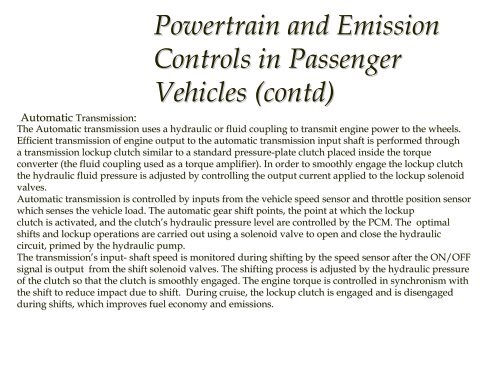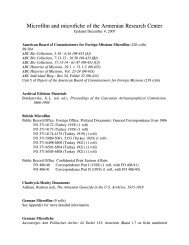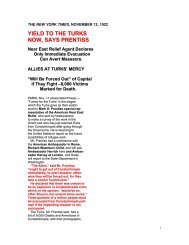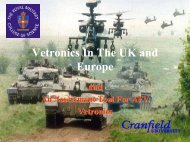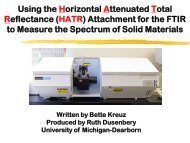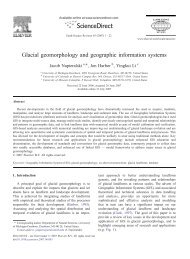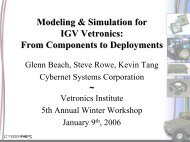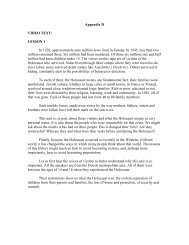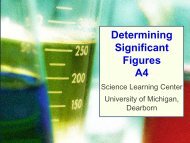Introduction to On Board Diagnostics (II)
Introduction to On Board Diagnostics (II)
Introduction to On Board Diagnostics (II)
Create successful ePaper yourself
Turn your PDF publications into a flip-book with our unique Google optimized e-Paper software.
Powertrain and EmissionControls in PassengerVehicles (contd(contd)Au<strong>to</strong>matic Transmission:The Au<strong>to</strong>matic transmission uses a hydraulic or fluid coupling <strong>to</strong> transmit engine power <strong>to</strong> the wheels.Efficient transmission of engine output <strong>to</strong> the au<strong>to</strong>matic transmission ssion input shaft is performed througha transmission lockup clutch similar <strong>to</strong> a standard pressure-plate plate clutch placed inside the <strong>to</strong>rqueconverter (the fluid coupling used as a <strong>to</strong>rque amplifier). In order <strong>to</strong> smoothly engage the lockup clutchthe hydraulic fluid pressure is adjusted by controlling the output current applied <strong>to</strong> the lockup solenoidvalves.Au<strong>to</strong>matic transmission is controlled by inputs from the vehicle speed sensor and throttle position sensorwhich senses the vehicle load. The au<strong>to</strong>matic gear shift points, the point at which the lockupclutch is activated, and the clutch’s hydraulic pressure level are acontrolled by the PCM. The optimalshifts and lockup operations are carried out using a solenoid valve <strong>to</strong> open and close the hydrauliccircuit, primed by the hydraulic pump.The transmission’s input- shaft speed is moni<strong>to</strong>red during shifting by the speed sensor after the ON/OFFsignal is output from the shift solenoid valves. The shifting process pis adjusted by the hydraulic pressureof the clutch so that the clutch is smoothly engaged. The engine <strong>to</strong>rque is controlled in synchronism withthe shift <strong>to</strong> reduce impact due <strong>to</strong> shift. During cruise, the lockup clutch is engaged and is disengagedduring shifts, which improves fuel economy and emissions.


